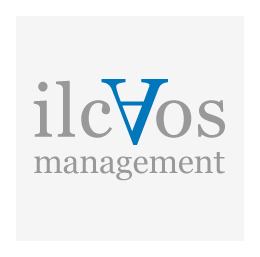Sapienza University has organized its Museum Pole starting from its 20 Museums containing all together about 2 millions of specimens. The objective of the Polo follow three different line: conservation of patrimony of cultural heritage, scientific research, promotion of scientific culture.
Two are the critical points:
- not sufficient visibility
- large heterogeneity
will balanced by the fantastic option related to the enrichment of 20 largely expanded patrimony.
The recent institution of fine coordination areas aims at increasing the synergy and interdisciplinarity between the 20 Museum:
- Archaeological, contemporary and classical Art Area
- Anthropological, medical and compared anatomy Area
- Earth Sciences Area
- Biological area
- Scientific Technological Area
Each one contains some of the Polo Museums.
The institution of the Polo has represented for Rome University la Sapienza the marker of a new more intense effort to support museum activities and role, giving it, increased visibility to be compared with international content and 20 museums responding to the request of the civil society. Fundamental to reach this aim is to have human capacities and professionalisms well educated to this function as the three new Museum Curators assigned to source of the above Areas. PmSapienza has worked during these last years at national and international events as the “European Night of the museum”, the week of the Scientific culture, Science in the Square, Sapienza Open Doors, Christmas at Museum Pole, Museum in Music, all encouraged by a large participation of citizens, especially young.
PMSapienza is actually member of ICOM-UMAC, ICCROM, Roman Museum District and has signed official agreements with ISPRA, S. Cecilia Academy, Zetema Culture Project to promote events sustained by MIBAC and Roma Capitale.
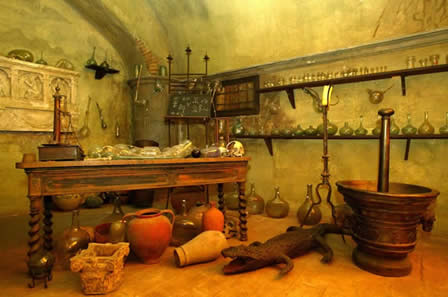
The Museum of the History of Medicine Department of Molecular Medicine – Sapienza University of Rome
Founded in 1938 by Adalberto Pazzini, the Museum of the History of Medicine contains a rich collection of exhibits, largely original, which can help trace developments in medical knowledge and practice from prehistoric times up to genomic revolution. Its current venue was inaugurated in 1954, using collections as a demonstration mainly as a support for medical history teaching. The collection by the opera singer Evan Gorga is the core and the most valuable section of the museum.
After the death of its founder, in 1975, the Museum began a slow decline which affected the conservation and display of collections. In the second half of the 1990s, Luciana Rita Angeletti became director and redeveloped it with restoration works, exhibitions revisiting, educational and scientific upgrades and a project aimed at cataloguing stored object. This allowed the Museum to gain scientific consideration, placing it in a international context of research, teaching and communication of the main issues of the history of medicine, biomedicine and the relationship between science and society.
The museum is divided into three floors. The first testifies to developments of medicine from prehistoric times to the first biomedical revolution of the Seventeenth century. The second describes the emergence of scientific medicine in its methodological and doctrinal articulation, allowing a glimpse into the future perspective biotechnological progress. The basement contains the original dioramas evoking medical-healthcare atmospheres of the past.
It is possible to use an audio-guide, asking for it at the Reception or directly to the staff of the museum at the first floor. There also are further information and education materials — and gadgets. Guided tours for groups must be requested at the email museo.stomed@uniroma1.it
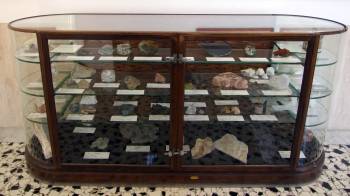
The Museum of “Arte e Giacimenti Minerari” (Mining and Ore Deposits)
The Museum of Arte e Giacimenti Minerari (Mining and Ore Deposits) was founded in 1984 after a donation of Assomarmi Association of about 100 Italian ornamental stone slabs. The Museum was originally hosted in the premises of the Dipartimento di Ingegneria Chimica Materiali Ambiente (Department of Chemical Materials and Environmental Engineering) in Via Eudossiana, 18 in Rome. In October 2000 the Museum was transferred in the building of the Faculty of Civil and Industrial Engineering in Latina.
During the years, the ornamental stone collection was improved. Actually 150 slabs, representative of the different ornamental stones coming from the different Italian regions, constitutes the collection.
The collection gives an overview of the main marketable stone products today available in Italy. Stone slabs of fully exploited lithotype, not any more available on the market, are also displayed. Each stone is identified according to its commercial name; such a choice was performed being this the approach commonly followed to identify the slabs. Synoptic panels, together with the “physical samples”, illustrate the geology of the different areas where the stones are located, as well as the methodology followed for their exploitation and the related processing techniques.
The stone collection represents an important reference not only for the students of the Faculties of Engineering, Geology and Architecture, but also for operators of the sector interested to better understand their characteristics (i.e. physical, chemical, mechanical, mineralogical, pictorial, etc.) for an optimal and sustainable use and valorization: both in a technical and artistic perspective.
The Museum also hosts a section constituted by mineralized rocks (i.e. metallic and nonmetallic) coming from different Italian and foreigner ores. Samples are classified according to their macroscopic attributes and their genesis on the basis of the available geological literature and the studies performed by the researchers of the Raw Materials Section of the Dipartimento di Ingegneria Chimica Materiali Ambiente (Department of Chemical Material and Environmental Engineering). Each sample is identified and described according to hosting ore and contained minerals characteristics, ore deposit characteristics and location. In each show cabinet containing the ore, additional information (i.e. historical, social, processing, etc.) and/or objects (i.e. exploitation tools) are also displayed. This latter section cannot be considered exhaustive, but it opens a window on a sector actually not any more active in Italy giving in some cases important and unique information concerning some of the most important ore minerals exploited in the past in Italy.
The Geology Museum
The Geology Museum was founded in 1873 by Giuseppe Ponzi, the first Professor of Geology at the pontifical University under Pope Pio IX. It houses nineteenth-century collections of “Ancient Marbles”: the prestigious collections by Tommaso Belli and Edward Dodwell are constituted by more than one thousand of polished tiles, cut from pieces of ornamental stones used in decorations of the Ancient Rome and, later, of the Christian churches. In the exhibition hall, rocks, boards, plaster casts and other interactive tools and multimedia stations treat different topics including: -the evolution of the Earth, -the geological hazards and resources resulting from its dynamics, -the water, -the recording time in geology. Paleogeographic globes, representative of important steps in the Earth evolution are also exhibited: the globes have specific colouring and relief surfaces specially to be explored by people with visual impairment.
The Museum of Commodity Science
Prof. Villavecchia was actually the founder of the Museum of Commodity Science and the Museum’s collections date back to 1906.
The Museum’s history closely follows the vicissitudes (and successive relocations) of the “Institute of Commodity Science” of the “Faculty of Economics and Business Studies” (Istituto di Merceologia, Facoltà di Economia e Commercio). Today, the Museum is located on the premises of the Department of Management (the Faculty of Economics, at 9, Via del Castro Laurenziano) and occupies a total area of 300 square meters. The exhibits are located on the ground floor, in a single space subdivided into specific sectors which can be visited according to a clearly signposted itinerary.
The collection items currently on show amount to a total of 6,000 items (a further 4,000 are in temporary storage and are included in the inventory). They come from collections, direct acquisitions, donations and the old Commodity Science Laboratory of the Institute. The museum contains a range of items: minerals, metals and alloys, chemicals, building materials, decorative arts and sculpture, ceramics, glass, tanning products, textile fibers, fabrics, paper, fuels, plastics, food and related products, detergents, wax, tobacco, fragrances, dyes, marine products, inks, precious stones, scientific instruments, collection of wood specimens, spermatheca. Of particular interest is the collection of instruments for the chemical and physical analysis of goods and produce.
All the technical equipment and instruments which have been archived are included in the illustrated catalogue available to the public.
The museum exhibition testifies to the continuous search for new raw materials, replacing others which had either been exhausted or were no longer economically viable. Additionally, it outlines the various steps in the transformation process, displaying the instruments used to obtain new, technologically advanced products.
The Museum has its own website and is included within the Museums Network of the University of Rome “Sapienza” (PMS).
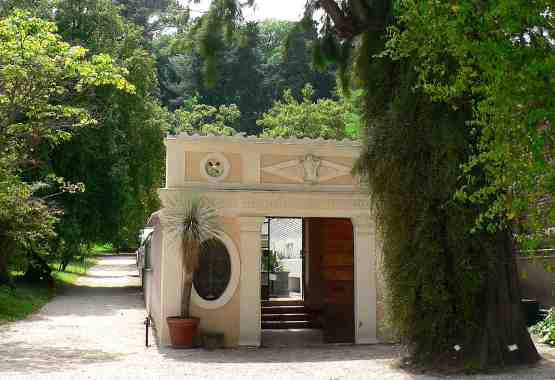
The Botanical Garden Museum, Department of Environmental Biology, Sapienza Università di Roma
The Botanical Garden is a didactic and scientific facility of the Sapienza University of Rome, and occupies an area of 30 acres in the historic centre of Rome. It is located in the ex-garden of the 16th-century palace of the Corsini family, an aristocratic family from Florence. The palace, now the seat of the Accademia Nazionale dei Lincei, and its garden were transferred to the Italian State at the end of the 19th century. The Botanical Garden’s location and its origin make it a unique place, as it is an example of a historic garden with an important artistic heritage, example of which is the monumental staircase, and whose asset was designed by the architect Ferdinando Fuga (1699-1782). Today it counts about 3000 species and includes several valuable collections: the arboretum, with many centuries-old trees, a legacy from the Corsini garden; the palm grove with 24 species, amongst which many specimens of the end of the 19th century; the bamboo grove with over 76 species; the rose garden that traces the evolutionary history of roses since antiquity; and the Giardino dei Semplici, based on the mediaeval hortus conclusus, containing plant species cultivated for medicinal use since old time.
In the Botanical Garden there is also a Seed Bank with over 1300 accessions.
The Botanical Garden Museum of Rome organizes guided tours for individuals, groups and schools of all types and levels. You can book guided tours through the Online Booking Service at the following web address: http://orto.gestyweb.it/Main.php
The Botanical Garden Museum of Rome open Monday to Saturday.
The Herbarium is a collection of flattened and dried plants which has been prepared with scientific methods and aims. The Herbarium-Botany Museum at Sapienza University of Rome consists of numerous collections comprising overall an estimated 1,000,000 specimens in five herbaria: Romano, General, Cesati, Anzalone and Montelucci. The origin of the Herbarium’s collections can be traced back to 1872, when Giuseppe De Notaris (1805-1877) was appointed the first professor of Botany at the University of Rome. De Notaris’ work has been continued by his successors. The collections at the Herbarium have been enhanced thanks to the work of museum staff, with the acquisition of major private collections and an intensive exchange programme with botanical institutes in Italy and abroad.
The “Museo delle Origini”
The “Museo delle Origini” was originally founded by Professor Ugo Rellini in 1942. Major redevelopment in the 1990s completely changed its structure, allowing new visitors to discover this previously almost hidden University museum.
The Museum holds archaeological finds from Italy, Europe and Africa. They range from the very oldest of the Lower Palaeolithic to the Early Iron Age. The exhibition displays highlights from the Museum’s collections in chronological order, with thematic trails related to social organization, subsistence activities, funerary rituals, technology.
Among the most important objects are flint tools dating back to the Lower Paleolithic (from 500,000 years ago), a fossil skull of Elephas antiquus found in construction work of Via dei Fori Imperiali in Rome, some of finest examples of Neolithic pottery, wooden objects from the pile-dwelling site of Ledro (Trento ) dating back to 4000 years ago and the rich grave goods of the Bronze Age Cave Manaccora (Foggia).
The “Museo delle Origini” plays an active role in both research and the teaching of university students. It regularly hosts students practicals in archaeology.
It is open daily to the public and welcomes school groups with guided tours by appointment.
The “Museo delle Origini” regularly hosts visiting researchers from all over the world, who would like to work with the collections as part of their research.
THE MLAC
The Museo-Laboratorio di Arte Contemporanea – MLAC (Lab-Museum of Contemporary Art), is one of the 20 museums that constitutes the Polo museale Sapienza (PmS). Since 2013, the Director of MLAC is Giuseppe Di Giacomo, Professor of Aesthetics, who has improved the connection with other contemporary arts museums of Rome. The MLAC is located in the back of the ‘Rettorato’ building and it was established in 1986, on a project formulated by Simonetta Lux. The MLAC is among the most interesting on the international scene for its museum and educational format intended to assert the centrality of the direct relationship with the artist and the work of art. Over the last decades the MLAC, promoted more than 300 events combining education, scientific research, historical-critical and artistic creation processes: interactive lessons, meetings with artists, roundtables, publications.
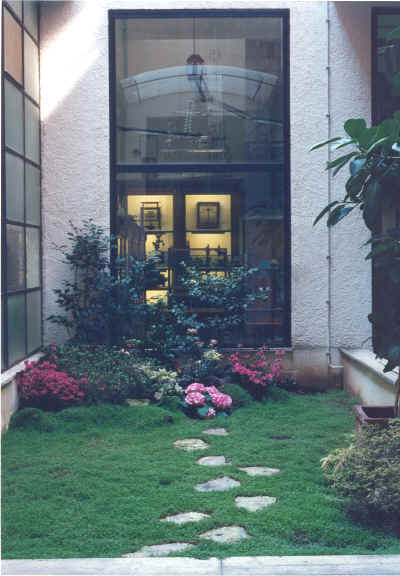
The Chemistry Museum
The Chemistry Museum of Rome University has been established in 1986 and opened to public in 1992. It is sited at the ground floor of the Chemistry Department.
Its overall surface is about 250 m2. It is directed by Prof. M. Barteri and assisted by dr.ssa M.G. Troiani and the Museum Council and supported by two studentships.
The Chemistry Museum exhibits and keeps scientific instruments, teaching tools, chemical substances, collections and documents, belonged to S. Cannizzaro and his group and dating since 1872 when Cannizzaro came to Rome and established the Regio Istituto Chimico.
Worthy to be mentioned cryoscopes, ebullioscopes, spectroscopes, different analytical strumentation and chemical apparatus, the von Schroeder’s coloured tables of early industrial chemical plants and collections of natural and artificial dyes and of ancient booth. Also on exhibit are some radio activity measurement apparatus built by G.A. Blanc working in this Department at the beginning of 20th century. All this material was collected both inside and outside the Chemistry Dept.
Related to Museum are also some ancient precious books exposed in show cases located here and there in the Dept.
Since the Museum has large windows open toward the Chemistry Department hall, people can have a look at many of these apparatus just walking through the Department main entrance.
The Chemistry Museum organises guided visits and temporary exhibitions: among them of particular success were “Mass measurements in chemistry and physic” (together with the Phisical Science Museum); “Old instruments of the Kircher Museum”: “Stress in metallic materials”; “Old salt works in Tarquinia”; “Treasures of Chemistry Department”; “History of distillation”; “To feed on rainbow” and more recently “Science and Art”, “Chemistry Show”. The exhibitions of the Museum occupy the halls of the Museum and are scattered along the Department.
Museum has also produced some multimedia programs reporting about its precious content and activity both particularly on the impact and contribution of Chemistry to life and society and on didactics of Chemistry.
The Chemistry Museum has been named “Primo Levi” on 25 march 25, 2010.
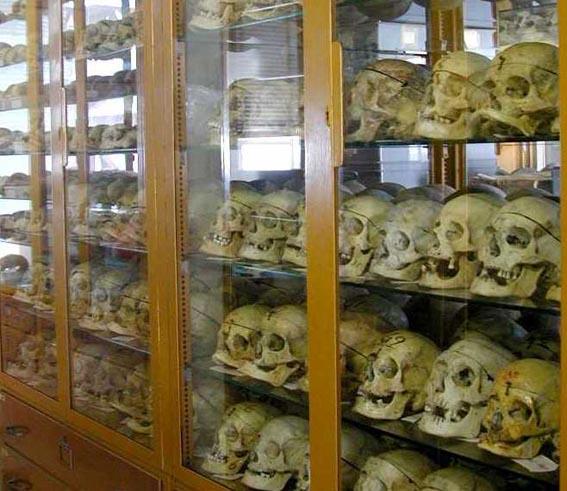
Museum of Anthropology “Giuseppe Sergi”
In 1984, the Museum of Anthropology of the Sapienza University of Rome was named after Giuseppe Sergi, who had just founded it a century earlier. The museum houses collections that are of interest to anthropology, paleoanthropology and the natural history of the primates. Of particular interest are the two Neanderthals found in Rome (Saccopastore), skeletal series of various prehistoric and historic localities from all over the world, craniological collection of non-human primates, the collection of anthropological and psycho-physiological instruments of the XIX century. The exhibition area includes two audio-visual educational tours regularly open to the public; namely: 1) Primate evolution and human diversity; 2) History of anthropology at the Sapienza between ‘800 and ‘900. The museum is open to everyone and admission is free; guided tours for school groups are guaranteed by the staff. Furthermore, in the museum there are performed researches in the fields of paleoanthropology and skeletal biology, which mainly deals with: the evolution of the genus Homo, with particular reference to the Neanderthals; the biology of ancient human populations in Italy and North Africa; comparative anatomy of primates.
